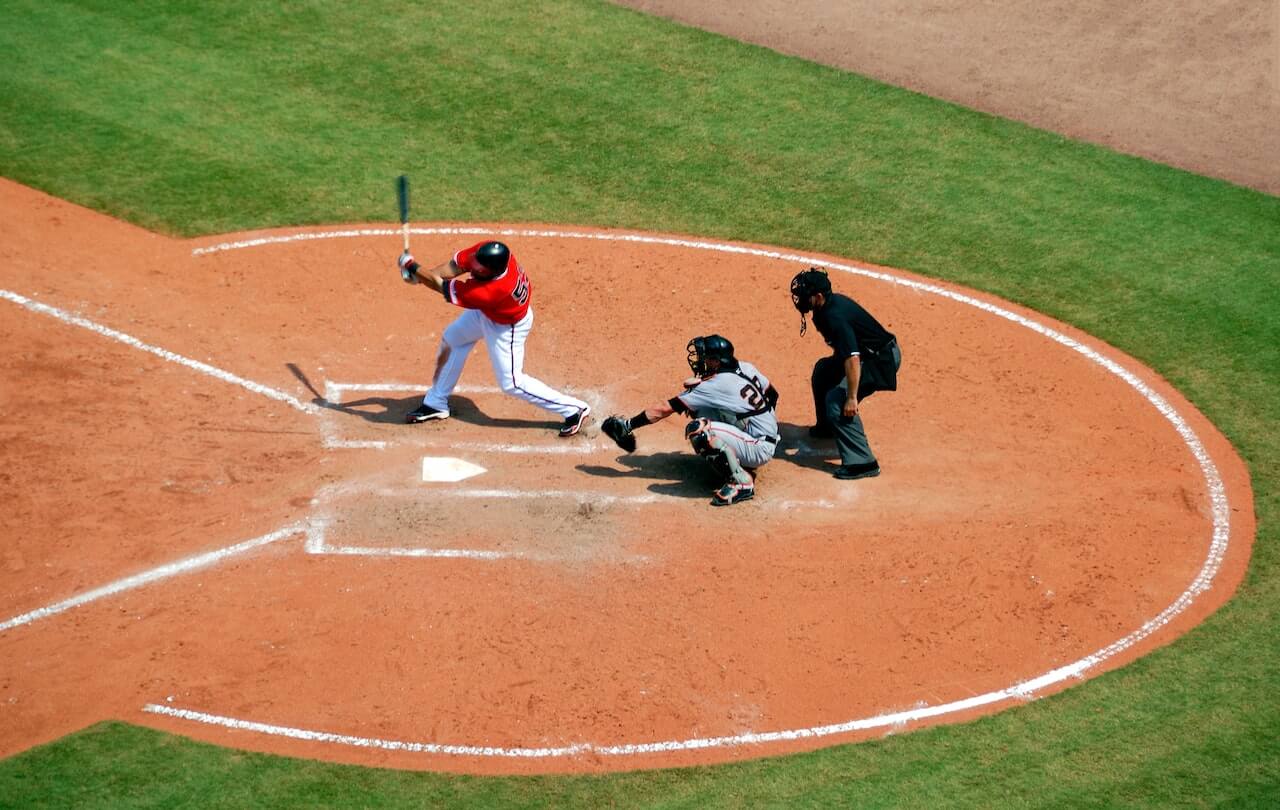Slugging percentage is a statistic used in baseball to measure a player’s power at the plate. It is calculated by dividing the total number of bases a player earns by the number of at-bats they have taken. This statistic is a useful tool for evaluating a player’s performance and is often used in conjunction with other metrics to provide a more complete picture of their abilities.
Slugging percentage takes into account not only a player’s ability to hit the ball, but also their ability to hit for extra bases. This means that a player who hits a lot of singles may have a high batting average, but a low slugging percentage. Conversely, a player who hits a lot of doubles, triples, and home runs will have a high slugging percentage even if their batting average is not as high.
While slugging percentage is not the only statistic used to evaluate a player’s performance, it is an important one. It provides valuable insight into a player’s power and ability to drive the ball, and can be used to compare players across different eras and teams. As such, it is an essential tool for anyone looking to understand the game of baseball and the players who play it.
What is Slugging Percentage?
Slugging Percentage is a statistic used in baseball to measure a batter’s power at the plate. It is calculated by dividing the total number of bases a player earns by the total number of at-bats. This statistic is often used in conjunction with a player’s batting average to evaluate their overall offensive performance.
Definition of Slugging Percentage
Slugging Percentage, also known as SLG, is a measure of a player’s power at the plate. It takes into account the number of extra base hits a player has, such as doubles, triples, and home runs, and gives more weight to those hits than to singles. The formula for calculating Slugging Percentage is:
SLG = (Total Bases) / (At Bats)
How to Calculate Slugging Percentage
To calculate a player’s Slugging Percentage, you first need to determine their total number of bases. This is done by adding up the number of bases they earn on each hit:
- Singles = 1 base
- Doubles = 2 bases
- Triples = 3 bases
- Home Runs = 4 bases
Once you have the total number of bases, you divide that number by the player’s total number of at-bats:
SLG = (Total Bases) / (At Bats)
For example, if a player has 100 at-bats and earns 150 total bases, their Slugging Percentage would be:
SLG = 150 / 100 = 1.5
Therefore, their Slugging Percentage would be 1.5.
Why is Slugging Percentage Important?
Slugging percentage is a key statistic in baseball, providing a measure of a player’s power and ability to hit for extra bases. Here are some reasons why slugging percentage is important:
Comparison to Batting Average
While batting average is a commonly used statistic to measure a player’s hitting ability, it only takes into account the number of hits a player gets, regardless of whether they are singles, doubles, triples, or home runs. Slugging percentage, on the other hand, gives more weight to extra-base hits, which are generally more valuable in terms of scoring runs. By comparing a player’s slugging percentage to their batting average, it is possible to get a better sense of their overall hitting ability and power.
Impact on Team Success
Slugging percentage can also have a significant impact on a team’s success. Teams that have a higher slugging percentage tend to score more runs and win more games, as they are able to hit for extra bases and drive in more runs. In addition, players with high slugging percentages can help to create a more intimidating lineup, putting pressure on opposing pitchers and making it more difficult for them to get outs.
Historical Significance
Slugging percentage has been an important statistic in baseball for many years, and has played a role in shaping the way the game is played. For example, the “Moneyball” approach to baseball, popularized by the Oakland Athletics in the early 2000s, emphasized the importance of on-base percentage and slugging percentage over traditional statistics like batting average and stolen bases. This approach helped the Athletics to achieve success despite having a relatively low payroll, and has since been adopted by many other teams around the league.
Factors Affecting Slugging Percentage
Home Runs and Extra-Base Hits
Home runs and extra-base hits are the most significant factors affecting a player’s slugging percentage. A home run is counted as a hit, and it is the most effective way to increase slugging percentage. Extra-base hits, such as doubles and triples, also contribute significantly to a player’s slugging percentage.
In contrast, singles do not contribute much to a player’s slugging percentage because they do not result in extra bases. Therefore, players who hit a lot of singles but few extra-base hits will have a lower slugging percentage.
Strikeouts and Walks
Strikeouts and walks also affect a player’s slugging percentage. Strikeouts reduce a player’s number of at-bats, which can lower their slugging percentage. Walks, on the other hand, increase a player’s on-base percentage, which can increase their slugging percentage if they also hit a lot of extra-base hits.
However, players who strike out frequently and do not hit many extra-base hits will have a lower slugging percentage. Similarly, players who walk frequently but do not hit many extra-base hits will also have a lower slugging percentage.
Ballpark Factors
The ballpark a player plays in can also affect their slugging percentage. Some ballparks have dimensions that favor hitters, such as shorter distances to the outfield fences. Players who play in these ballparks may have higher slugging percentages than players who play in ballparks with larger dimensions.
Additionally, some ballparks have playing surfaces that affect the way the ball bounces, rolls, or travels through the air. These factors can also affect a player’s slugging percentage.
Conclusion
Slugging percentage is a statistic that measures a player’s power at the plate. By calculating the total number of bases a player earns divided by the total number of at-bats, slugging percentage provides a more complete picture of a player’s hitting ability than batting average alone.
While slugging percentage is an important statistic, it should not be the sole factor in evaluating a player’s performance. Other factors such as on-base percentage, batting average, and defensive ability also play a role in a player’s overall value to their team.
It is important to note that slugging percentage can vary depending on the ballpark and the era in which a player played. For example, players who played in hitter-friendly ballparks or during the “steroid era” may have higher slugging percentages than players who played in pitcher-friendly ballparks or during other eras.
Despite these limitations, slugging percentage remains a valuable tool for evaluating a player’s power and offensive production. By taking into account both hits and extra-base hits, slugging percentage provides a more nuanced look at a player’s hitting ability and can help identify players who excel at driving in runs and hitting for power.







